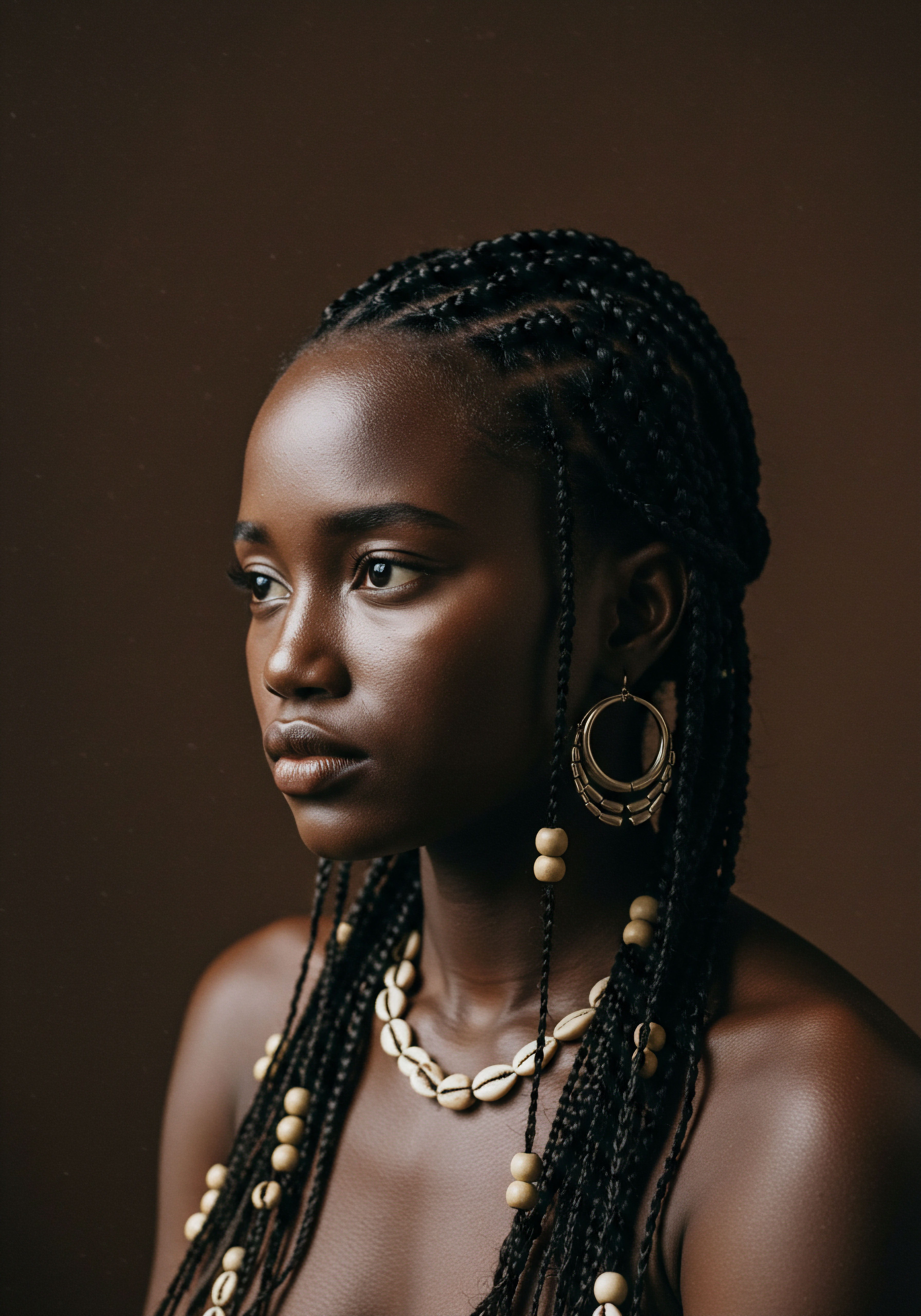
Roots
The whisper of ancient breezes through coiled strands, the scent of natural balms pressed into the scalp, the rhythmic motion of hands shaping hair—these sensations, distant echoes from forgotten eras, nonetheless resonate deeply within the contemporary textured hair care experience. We stand today at a crossroads of heritage and innovation, where the quest for healthy, vibrant curls, coils, and waves often leads us back to the very origins of human ingenuity. Understanding the enduring legacy of these practices reveals a profound connection, a shared language of care that transcends centuries and continents. It is a testament to the enduring wisdom of our ancestors, whose intimate knowledge of their hair and environment laid the groundwork for many of the principles we cherish today.

What Historical Hair Practices Laid Foundations for Modern Care?
Across ancient civilizations, hair was far more than a mere aesthetic adornment; it was a powerful signifier of identity, social standing, spiritual belief, and community ties. From the banks of the Nile to the vast landscapes of ancient Africa and the Americas, people cultivated sophisticated routines to maintain their hair’s health and beauty. These practices, born of necessity and deep cultural meaning, often centered on principles that remain highly relevant for textured hair.
- Scalp Health ❉ Ancient Egyptians, for instance, used castor oil for both medicinal and cosmetic purposes, recognizing its ability to soothe skin ailments and promote hair growth. This aligns with modern textured hair care’s emphasis on a healthy scalp as the bedrock for strong strands.
- Moisture Retention ❉ In various African societies, the application of natural butters, oils, and powders served to seal moisture into the hair, a practice crucial for textured hair types prone to dryness. The use of shea butter, still a staple today, has roots in these ancient traditions.
- Protective Styling ❉ Braids, twists, and coiling methods were not simply decorative. They offered protection from environmental elements and reduced manipulation, allowing hair to retain length. Ancient African cornrows, dating back to 3500 BCE, served as both cultural identifiers and practical solutions for hair management.
The foresight of these early practitioners, observing their hair’s response to natural remedies and protective measures, established a fundamental understanding of hair biology and care that continues to guide us.
Ancient hair care, born of cultural depth and practical necessity, laid the elemental groundwork for today’s textured hair routines.

Ancient Hair Tools and Their Echoes
The tools of ancient hair care, though seemingly rudimentary, were remarkably effective and often precursors to modern implements. Combs, for example, are among the oldest tools discovered by archaeologists, with refined forms dating back 5000 years in Persia. These early combs, often crafted from wood or bone, were essential for detangling and styling, much like wide-tooth combs are indispensable for textured hair today.
Beyond combs, historical records and archaeological finds reveal other ingenious devices. Ancient Egyptians used tools resembling tongs for curling and trimming hair, a distant relative of our contemporary curling irons. While direct heat styling on textured hair is now approached with caution due to potential damage, the underlying concept of shaping hair through tension and specific tools persists. Moreover, powders made from clay, ash, and ground plants were used in ancient Egypt to absorb excess oil and add volume, foreshadowing modern dry shampoos and texturizing powders.
| Ancient Tool/Substance Wooden/Bone Combs |
| Historical Application Detangling, styling, communal grooming |
| Modern Counterpart/Principle Wide-tooth combs, detangling brushes |
| Ancient Tool/Substance Natural Oils and Butters |
| Historical Application Moisturizing, sealing, scalp health |
| Modern Counterpart/Principle Hair oils, leave-in conditioners, deep conditioners |
| Ancient Tool/Substance Plant-based Powders |
| Historical Application Oil absorption, volume, dry cleansing |
| Modern Counterpart/Principle Dry shampoo, texturizing powders |
| Ancient Tool/Substance Curling Tongs (heated) |
| Historical Application Creating curls and waves |
| Modern Counterpart/Principle Curling irons, heatless curl methods |
The very act of hair care, whether in ancient times or the present, involves a considered selection of tools and substances to achieve desired results. The ingenuity of ancient civilizations in devising solutions for their hair, often with limited resources, speaks to a deep, abiding human desire for self-presentation and wellness.
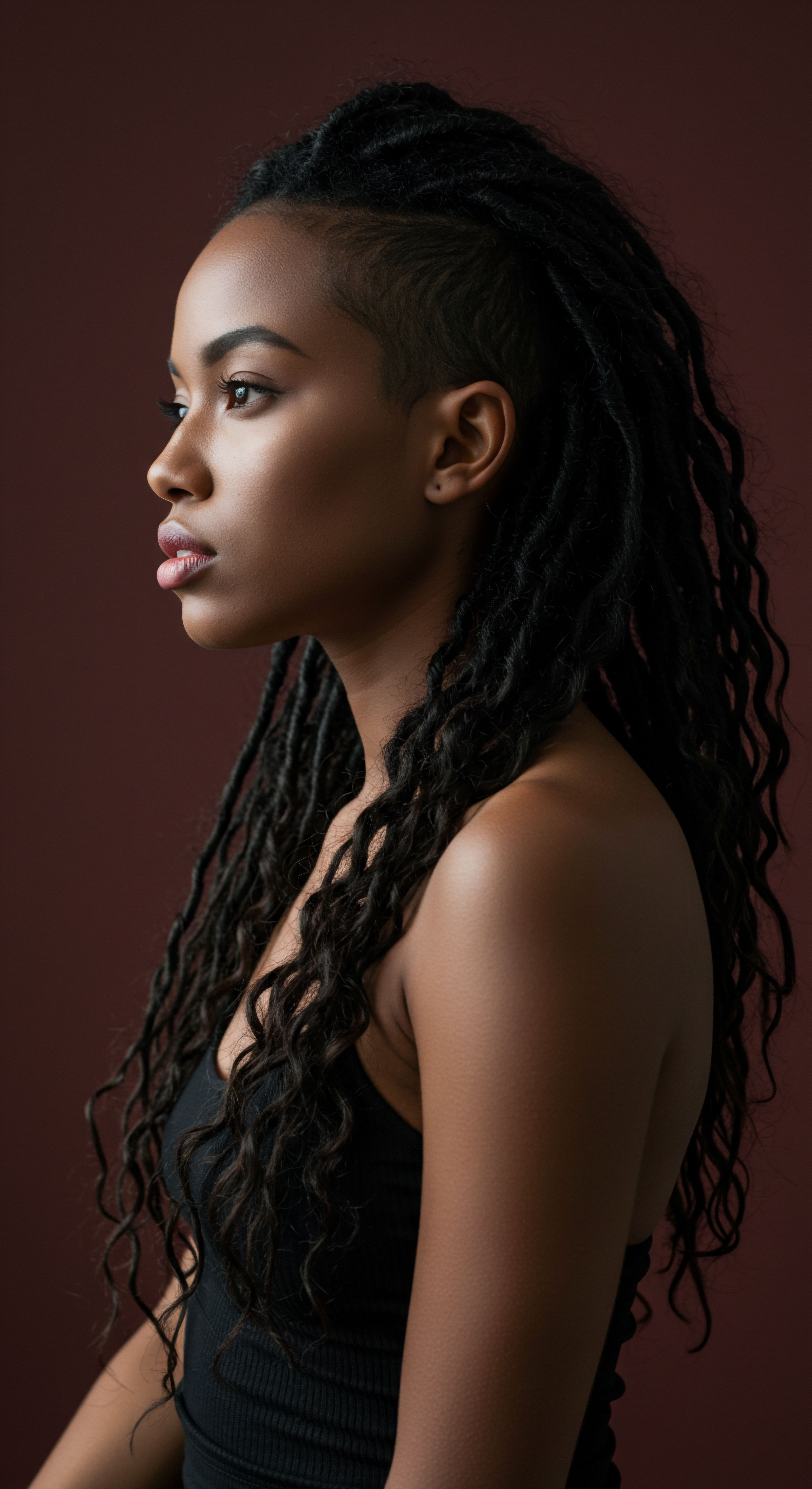
Ritual
To consider hair care a mere chore would overlook the profound, rhythmic cadence of practices passed down through generations. The daily or weekly gestures we extend to our strands are not isolated acts; they are threads connecting us to a rich tapestry of ancestral wisdom. Stepping into the realm of ancient hair rituals reveals a world where grooming was intertwined with social bonding, spiritual connection, and a deep respect for natural elements. These were not just routines; they were moments of intention, often shared, always meaningful.

How Did Communal Grooming Influence Hair Care Today?
In many ancient African societies, hair care was a deeply communal activity. Braiding sessions, for example, could last for hours, transforming into vital spaces for storytelling, sharing wisdom, and strengthening familial and community bonds. This shared experience fostered a collective understanding of hair care techniques and promoted intergenerational learning. Grandmothers, mothers, and daughters would gather, their hands moving with practiced grace, as conversations flowed alongside the intricate patterns forming on heads.
This communal aspect finds a contemporary echo in modern textured hair communities. Salons dedicated to natural hair often serve as social hubs, places where knowledge is exchanged, styles are celebrated, and a sense of belonging flourishes. Online platforms and social media groups also replicate this shared learning environment, allowing individuals to connect over techniques, product recommendations, and hair journeys. The shared experience of caring for textured hair, whether physically together or virtually, remains a powerful force for collective growth and celebration.
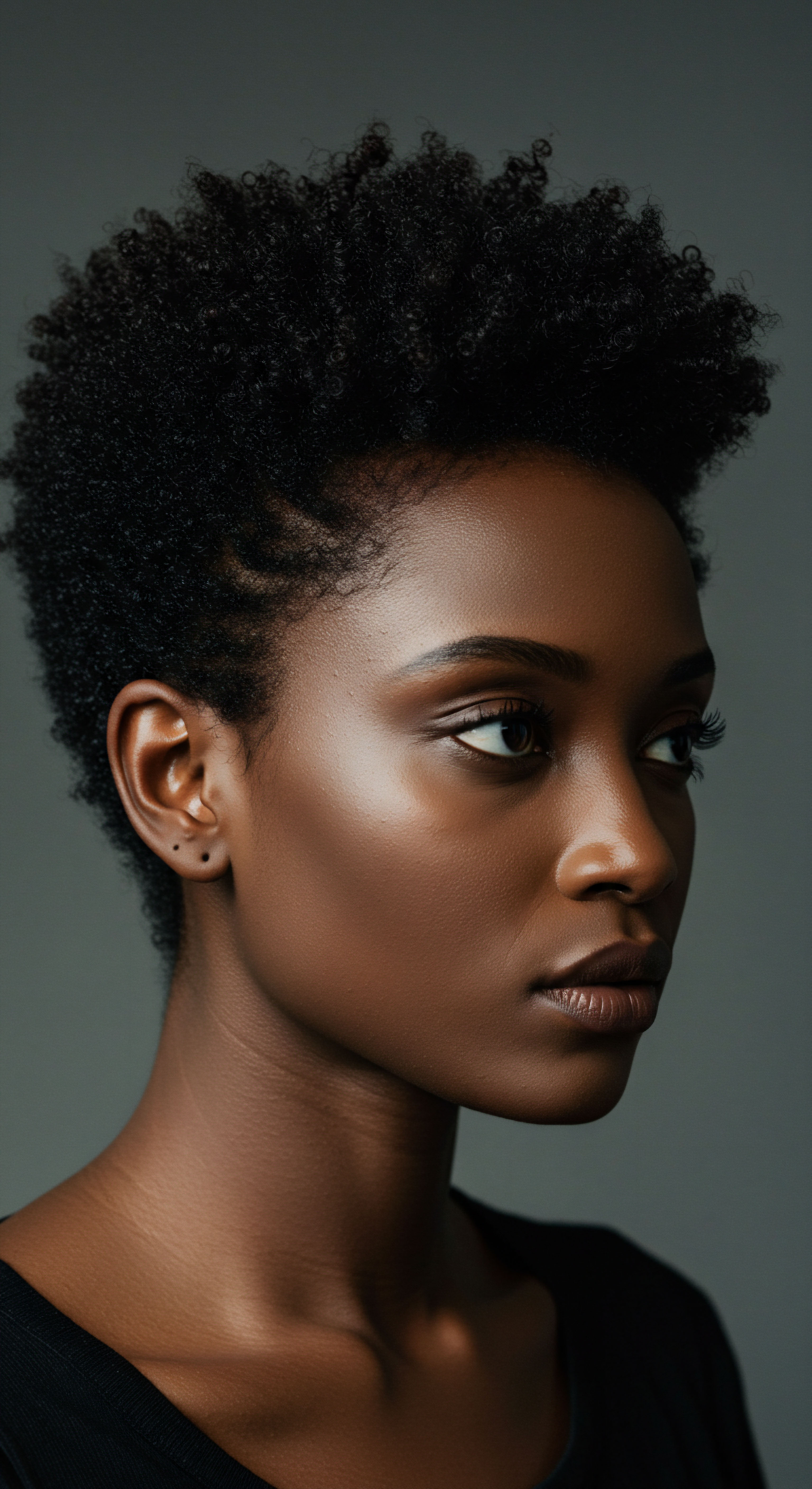
What Traditional Ingredients Shape Modern Formulations?
The ancient world was a laboratory of natural remedies, and hair care benefited immensely from this botanical wisdom. Indigenous populations across Africa, Asia, and the Americas discovered and utilized a wealth of plant-based ingredients, many of which now populate the ingredient lists of modern hair products.
Consider the widespread use of Oils. In ancient India, Ayurvedic medicine revered coconut oil, sesame oil, and amla oil for their nourishing properties, promoting scalp health and hair vitality. Ancient Egyptians favored castor oil for growth and conditioning. These practices directly inform the contemporary popularity of natural oils for moisturizing, sealing, and scalp treatments in textured hair care.
A study on the ethnobotanical uses of plants for hair care in Northern Morocco identified 42 species, with the most cited families including Lythraceae (which contains henna), Rosaceae (roses), and Lamiaceae (mints), all traditionally used for hair health and appearance. This research underscores the deep historical reliance on local flora for hair solutions, a reliance that continues in many modern, natural product lines.
Beyond oils, ingredients like Henna (Lawsonia inermis), used for centuries by Moroccan women to strengthen, revitalize, and color hair, provide a tangible link to ancient practices. Chebe Powder, sourced from the seeds of the Chebe plant in Chad, was historically applied to hair to aid length retention by sealing the hair shaft, a practice that aligns with modern understanding of cuticle health and moisture preservation. These natural elements, once the sole recourse, now stand alongside scientifically synthesized compounds, often revered for their ancestral efficacy.
The enduring presence of these ingredients speaks to their efficacy and the wisdom of those who first harnessed their properties.
- Shea Butter ❉ A staple in West African communities for centuries, providing deep moisture and protection.
- Coconut Oil ❉ A cornerstone of Ayurvedic hair traditions, known for its ability to penetrate the hair shaft and reduce protein loss.
- Amla (Indian Gooseberry) ❉ A powerful antioxidant, traditionally used to condition the scalp and prevent premature graying.
- Castor Oil ❉ Utilized in ancient Egypt and traditional Chinese medicine for hair growth and scalp health.
- Henna ❉ A natural dye and conditioning agent with a long history of use in North Africa, the Middle East, and South Asia.
The communal spirit of ancient hair rituals and the wisdom of traditional ingredients continue to shape contemporary textured hair care.
The deliberate selection and preparation of these ingredients, often involving grinding, infusing, and blending, represent an early form of cosmetic chemistry. The knowledge of which plant part to use—leaves, roots, or seeds—and the optimal preparation method was carefully passed down, forming a living library of hair wellness.

Relay
The intricate dance between ancient practices and modern textured hair care routines is not merely a collection of historical footnotes; it is a profound dialogue, a relay race of wisdom across generations. This conversation reveals how environmental pressures, social constructs, and scientific insights have converged to shape our understanding and treatment of textured hair. To truly grasp the depth of this connection, one must look beyond surface similarities and consider the underlying biological, cultural, and even political forces at play.

How Do Ancient Styling Choices Connect with Modern Hair Science?
The choices made by ancient populations regarding their hair were often deeply pragmatic, responding to environmental conditions and the inherent characteristics of textured strands. The practice of protective styling, particularly braiding, offers a compelling illustration. In ancient Africa, braids were not only social markers but also served to safeguard hair from the elements, reducing breakage and retaining length. This ancient wisdom finds powerful resonance in modern hair science.
Textured hair, with its unique curl patterns, is inherently more susceptible to mechanical damage and moisture loss due to the shape of its cuticle layer. When strands are manipulated frequently, the cuticle can lift, leading to frizz and breakage. Protective styles minimize daily handling, allowing the hair to rest and retain moisture. This is a scientific validation of an ancient, intuitive practice.
A study on the biomechanics of braiding could demonstrate how the intertwining of strands distributes tension, reduces friction, and thus protects the hair shaft from external stressors. While a specific study on this exact biomechanical aspect across ancient and modern contexts is complex to isolate, the principles of reduced manipulation and physical protection are consistently cited in modern trichology for textured hair health.
Consider the ancient use of oils and butters, often applied to the scalp and hair. Modern science now explains that these emollients, rich in fatty acids, create a barrier that slows transepidermal water loss from the scalp and seals the hair cuticle, preventing moisture evaporation from the hair shaft. This aligns perfectly with the contemporary focus on sealing and moisturizing regimens for textured hair, which naturally tends to be drier than straight hair due to its structure. The traditional application of ingredients like Animal Fats or Plant-Based Butters, as seen in Himba tribes coating their hair in red clay mixed with butter, or Ethiopian and Somali women using whipped animal milk, served the same moisture-retention purpose that modern creams and butters do.
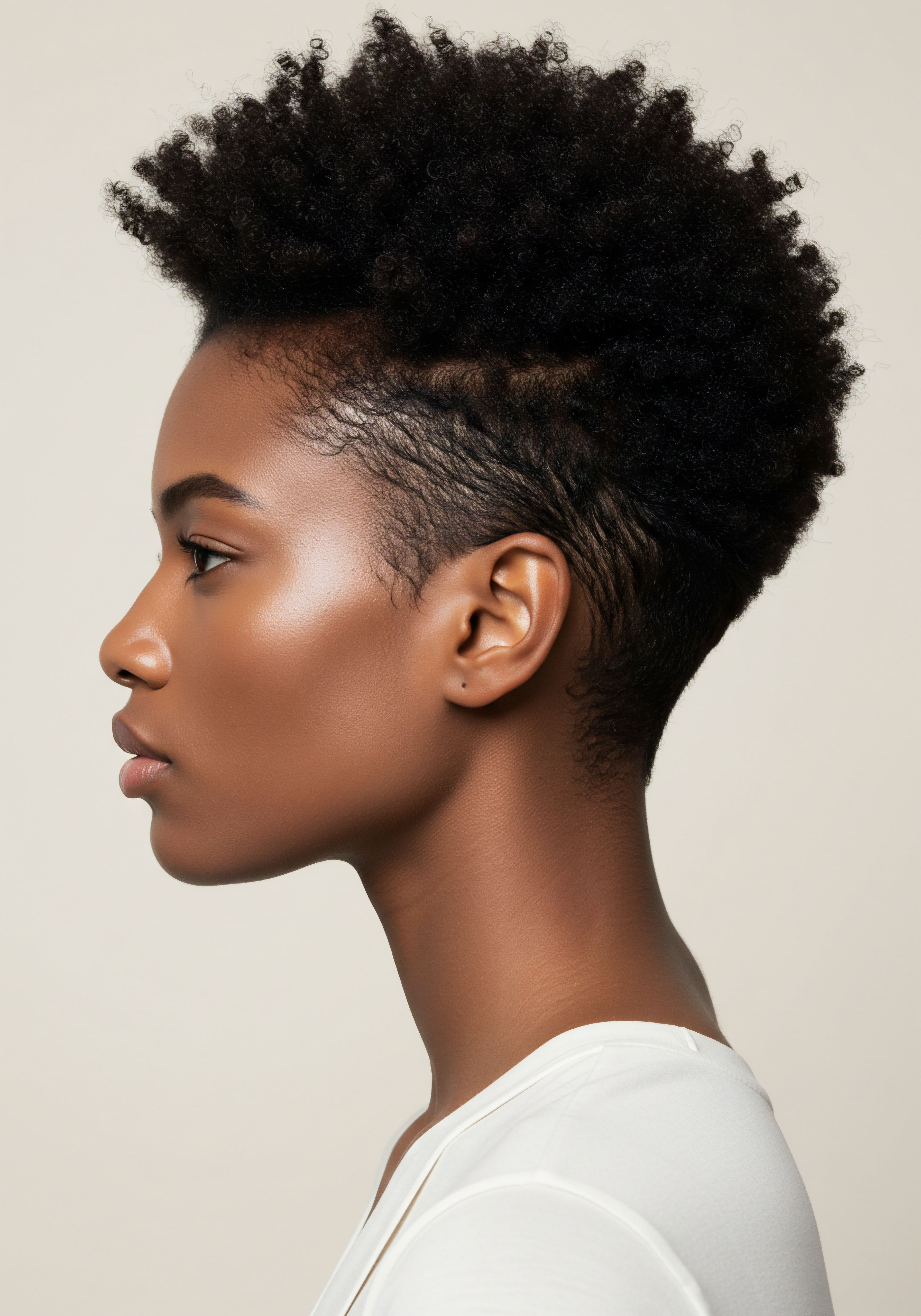
What Socio-Cultural Shifts Impacted Hair Care Over Time?
The history of textured hair care is also a narrative of resilience against profound socio-cultural shifts. During periods of enslavement and colonialism, traditional African hair practices were often suppressed or devalued, replaced by imposed Eurocentric beauty standards. Enslaved Africans were sometimes forced to cut their hair, stripping them of a powerful cultural identifier. Despite this, the ingenuity persisted; cornrows, for instance, became a functional style that could last for a week and were even used as a means of secret communication for escape routes.
The headwrap, a ubiquitous accessory across many African cultures, also underwent a complex transformation. Originally symbolizing status, religion, or marital standing, headwraps in the Americas were, at times, mandated to signify a lower social status for Black and mixed-race women. Yet, these women reclaimed the headwrap, adorning them with feathers and jewels, transforming a symbol of oppression into a statement of defiance and cultural pride. This act of reclamation highlights the enduring power of cultural practices to adapt and resist.
The journey of textured hair care reveals an interplay of biological responses, cultural resilience, and societal influence.
The natural hair movement of the 20th and 21st centuries, in many ways, represents a contemporary relay of this ancient resilience. It is a conscious return to embracing and celebrating natural hair textures, often drawing directly from traditional African and Indigenous practices. This movement challenges prevailing beauty norms, advocating for self-acceptance and cultural affirmation. The increased availability of products catering specifically to textured hair, often highlighting natural ingredients, reflects a market response to this cultural resurgence.
| Ancient Principle/Practice Braiding for protection |
| Underlying Mechanism (Ancient/Modern Understanding) Reduces manipulation, limits environmental exposure, minimizes breakage. |
| Modern Textured Hair Care Routine Protective styles (box braids, twists, cornrows, locs) for length retention and hair health. |
| Ancient Principle/Practice Oiling/Buttering hair |
| Underlying Mechanism (Ancient/Modern Understanding) Seals moisture, nourishes scalp, adds shine. |
| Modern Textured Hair Care Routine Regular application of leave-in conditioners, oils, and butters to combat dryness. |
| Ancient Principle/Practice Communal grooming |
| Underlying Mechanism (Ancient/Modern Understanding) Knowledge transfer, social bonding, shared cultural identity. |
| Modern Textured Hair Care Routine Natural hair meetups, online communities, salon as a social hub. |
| Ancient Principle/Practice Herbal washes/treatments |
| Underlying Mechanism (Ancient/Modern Understanding) Natural cleansing, conditioning, therapeutic properties. |
| Modern Textured Hair Care Routine Sulfate-free cleansers, DIY masks with natural ingredients (e.g. hibiscus, amla). |
The scientific community has begun to explore the efficacy of these traditional practices with modern methodologies. For instance, ethnobotanical studies document the vast array of plants used for hair care in various regions, validating their historical significance. A survey in Nuapadhi village, India, identified 34 different plant species used for hair problems, with leaves being the most common part used for preparations.
The high usage of these indigenous plants indicates a continued reliance on traditional knowledge for primary hair care routines. Such research provides a compelling bridge, connecting ancestral wisdom with contemporary scientific understanding, showing how what was once intuitive practice is now often backed by phytochemical analysis and dermatological insights.
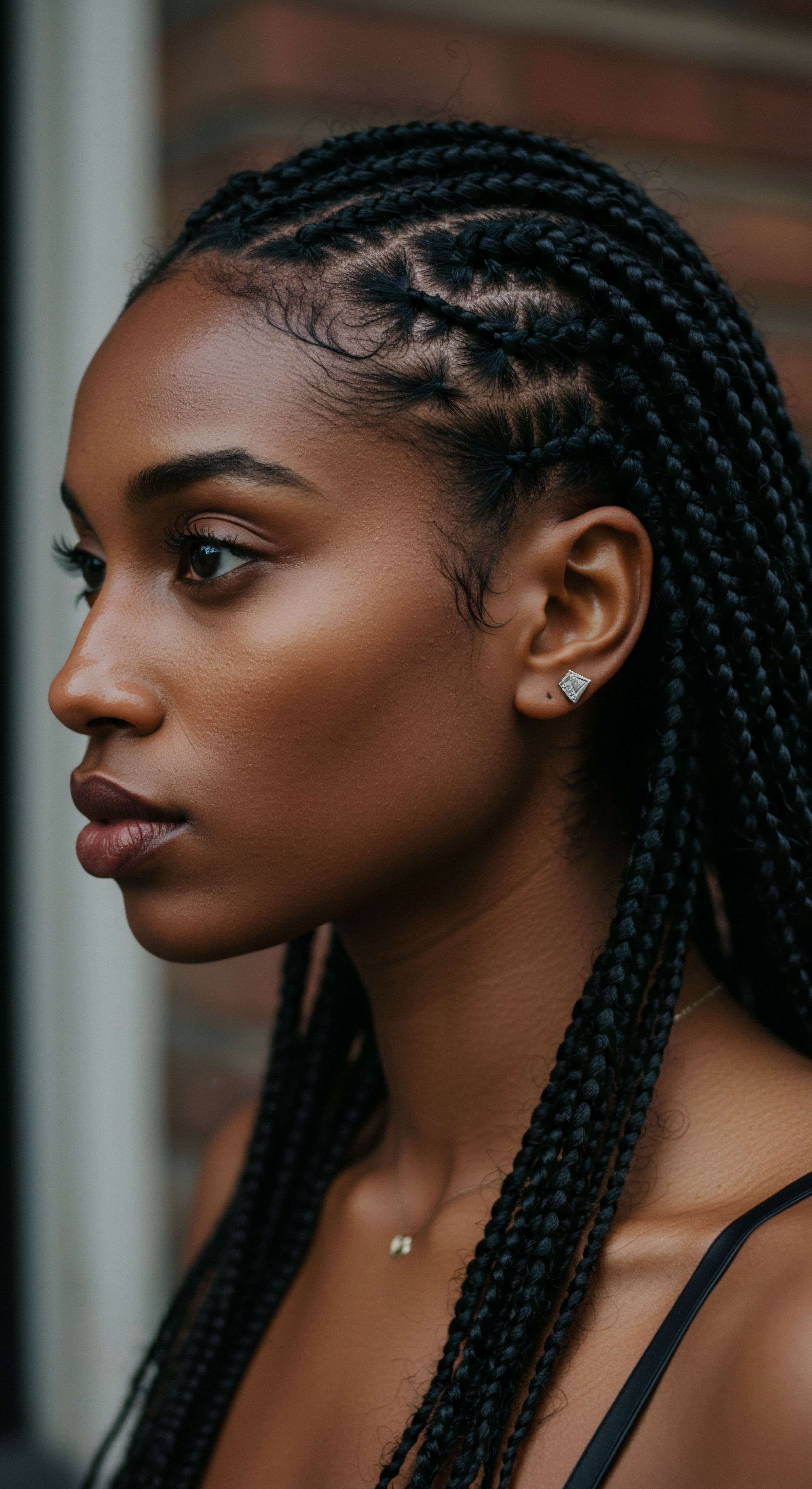
Reflection
As we conclude this exploration of ancient influences on modern textured hair care, a profound realization settles ❉ our hair, in its very essence, holds a living memory. Each curl, every coil, carries echoes of practices that spanned continents and millennia, shaped by hands that understood the rhythms of nature and the language of cultural expression. The journey from ancient balms and intricate braids to today’s meticulously crafted regimens is not a linear progression, but a beautiful, cyclical unfolding.
We find ourselves returning, not out of nostalgia, but out of a deeper understanding that the most profound wisdom often resides in the quiet, persistent truths of the past. The care we extend to our hair today is a continuation of an enduring legacy, a personal ritual that honors both heritage and the evolving science of our strands.

References
- Aghajanian, L. (2022). “A Beautiful Record of How Modern Headwraps.” The Wrap Life.
- Alicia Tenise. (2019). “Cultural Significance of Braids.” Alicia Tenise.
- Atmabodh Wellness. (2024). “Nourish Your Hair with Ayurvedic Oils for Growth.” Atmabodh Wellness.
- Chakraborty, A. & Gupta, P. (2024). “Hair Oiling ❉ The Ancient Secret to Lustrous Locks.” Fabulive.
- Colleen. (2020). “The History of Textured Hair.” Colleen.
- Curl Keeper. (2024). “Years of Curly Hairstyles.” Curl Keeper.
- DigitalCommons@Fairfield. (n.d.). “Hair in the Classical World Hair and Cultural Exchange Text Panel.” DigitalCommons@Fairfield.
- JD Institute of Fashion Technology. (2021). “HEADWRAPS ❉ HISTORY AND EVOLUTION.” JD Institute of Fashion Technology.
- Jonathan Brown Kettering and Rushden. (2024). “History of Men’s Grooming.” Jonathan Brown Kettering and Rushden.
- Khumbula. (2024). “A Crowning Glory ❉ Hair as History, Identity, and Ritual.” Khumbula.
- Leone Culture. (2023). “Exploring the Significance Of Headwraps In African Fashion And Traditions.” Leone Culture.
- Mainstream. (n.d.). “The Evolution and Timing of Protective Styles.” Mainstream.
- Naturtint USA. (2022). “Hair Styling Tools Through The Ages.” Naturtint USA.
- News. (2025). “Why Head Wraps Matter in Culture and Fashion.” News.
- Odele Beauty. (2024). “A History Lesson On Hair Braiding.” Odele Beauty.
- Reddit. (2018). “Is hair on Ancient Statues stylized or did the Greeks/Romans have ‘different’ hair than modern humans?” Reddit.
- Reddit. (2020). “Sacred Hair.” Reddit.
- Reddit. (2021). “No raw oils and butters vs. Traditional African hair care?” Reddit.
- Rosy Salon Software. (2015). “Styling Tools Then and Now.” Rosy Salon Software.
- Sartorial Magazine. (2025). “Braids, Locs, and Beyond ❉ The Beauty and History of Protective Styles.” Sartorial Magazine.
- Sister Sky. (2023). “Why Native Americans Burn Hair.” Sister Sky.
- Tymo Beauty. (2024). “History of Hairstyling ❉ From Ancient Tools to Modern Techniques.” Tymo Beauty.
- VIORI Shampoo Bars. (2022). “5 Hair Rituals From Around the Globe.” VIORI Shampoo Bars.
- Younes, K. et al. (2021). “Ethnobotanical Survey of Medicinal Plants used in the Treatment and Care of Hair in Karia ba Mohamed (Northern Morocco).” Journal of Pharmacy & Pharmacognosy Research.
- Younes, K. et al. (2021). “Ethnobotanical Survey of Medicinal Plants used in the Treatment and Care of Hair in Karia ba Mohamed (Northern Morocco).”